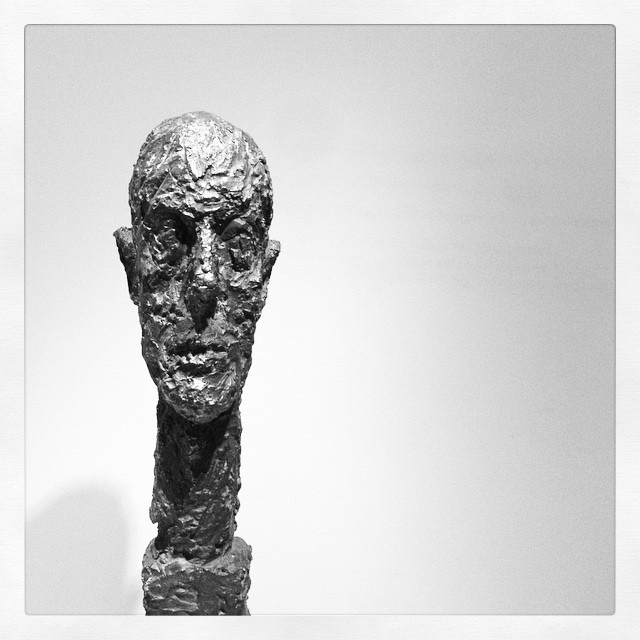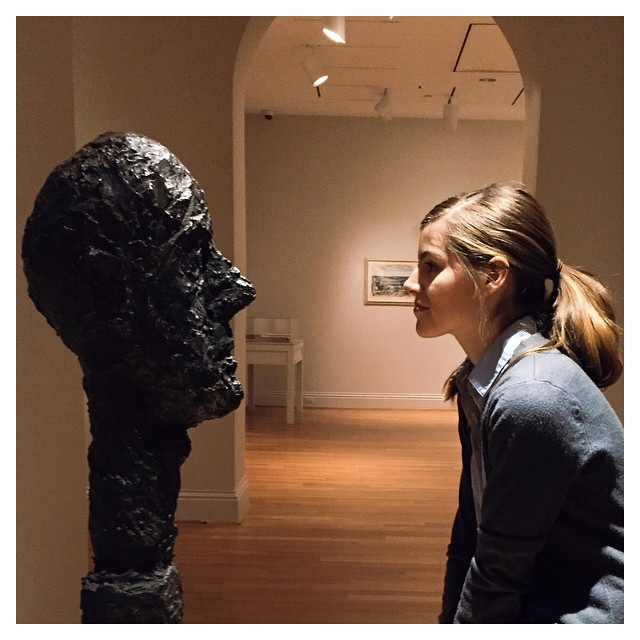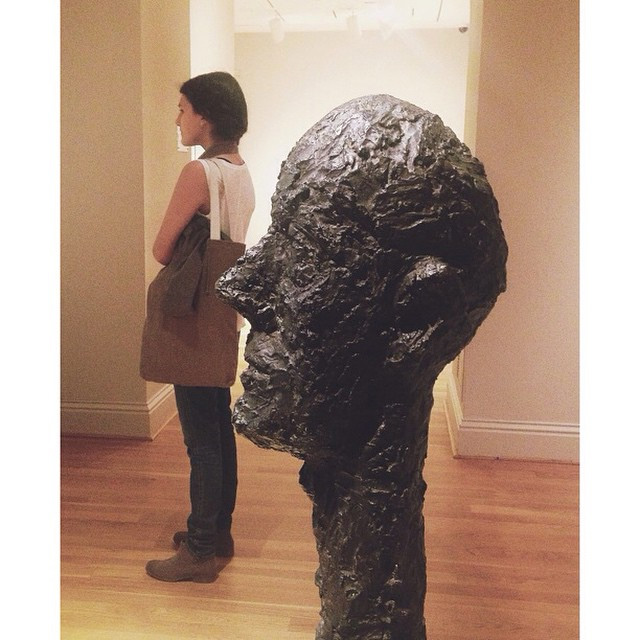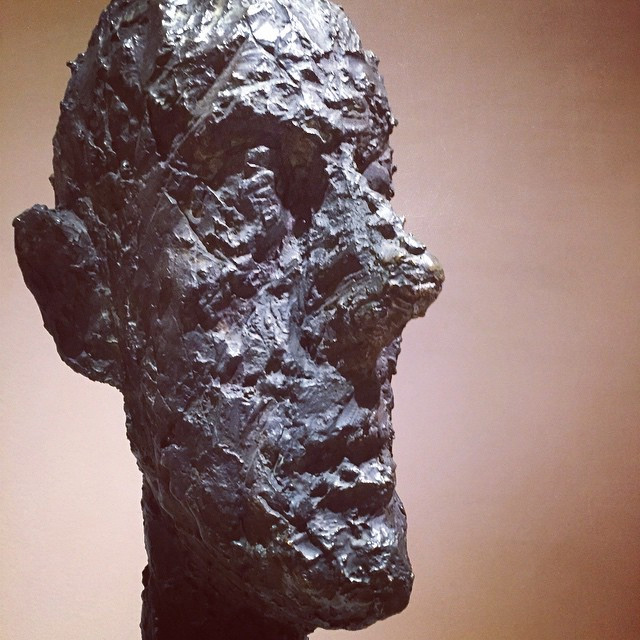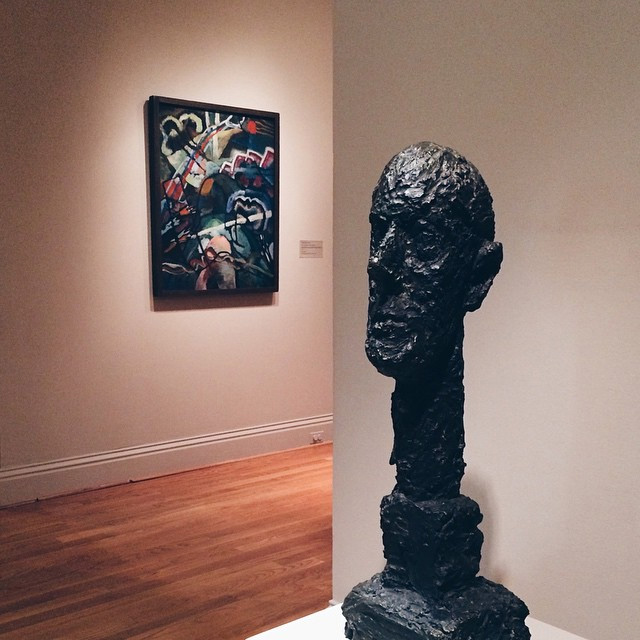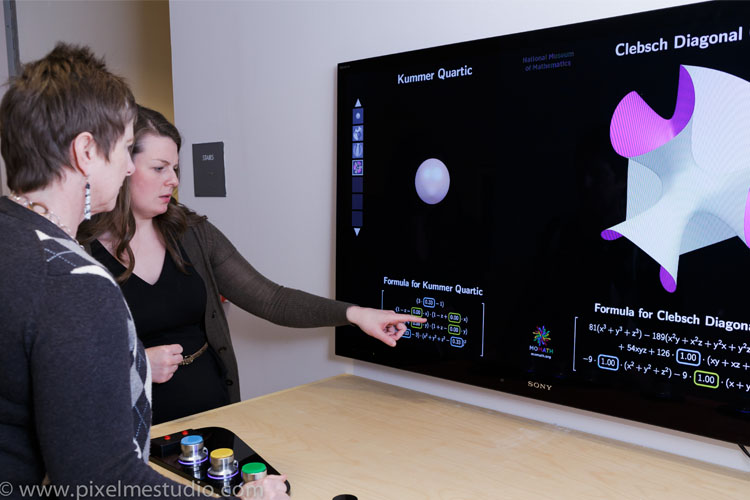We’ve noticed that visitors are quite interested in Alberto Giacometti’s Monumental Head and have been snapping creative photos since it went back on view in our galleries a few months ago. In this month’s installment of ArtGrams (see the first and second installments from previous months), we’re highlighting some of our favorite shots, angles, and interactions with the sculpture.
Man Ray’s Shakespearean Equations: Twelfth Night

Man Ray, Shakespearean Equation, Twelfth Night, 1948. Oil on canvas, 34 1/8 x 30 1/8 in. Hirshhorn Museum and Sculpture Garden, Smithsonian Institution. Gift of Joseph H. Hirshhorn, 1972. © Man Ray Trust / Artists Rights Society (ARS), NY / ADAGP, Paris 2015. Photography by Lee Stalsworth
In contrast to other Shakespearean Equation paintings, which feature a single or a pair of mathematical models, Twelfth Night unites eight forms. Two additional “foreign” items—an ostrich egg and a phallic object—reference other Man Ray works. Like the love triangle and complex plot of the Shakespearean play evoked by the work’s title, this intricate gathering of many improbable objects suggests similarly complicated and overlapping relationships.
Manipulating Math with Formula Morph
Man Ray–Human Equations showcases Man Ray’s depictions of complicated mathematical objects that he first encountered in the 1930’s. The models served as educational tools for mathematical students; however, Man Ray was interested in how they looked more than the specific mathematical equations they represented. Because the equations are fairly complicated and dense, The Phillips Collection incorporates a participatory experience, Formula Morph, into the exhibition to help visitors better understand the visual representation of the equations.
Provided by the Museum of Mathematics in New York City, Formula Morph shows some of the same models and equations that are featured in the exhibition. Users can select an equation, and adjust it using colored knobs that then alter the shape of the object on the screen. Formula Morph creates a visual connection between the objects Man Ray used with the complicated mathematical equations that they represent.
Kelley Daley, Graduate Intern for Programs and Lectures

